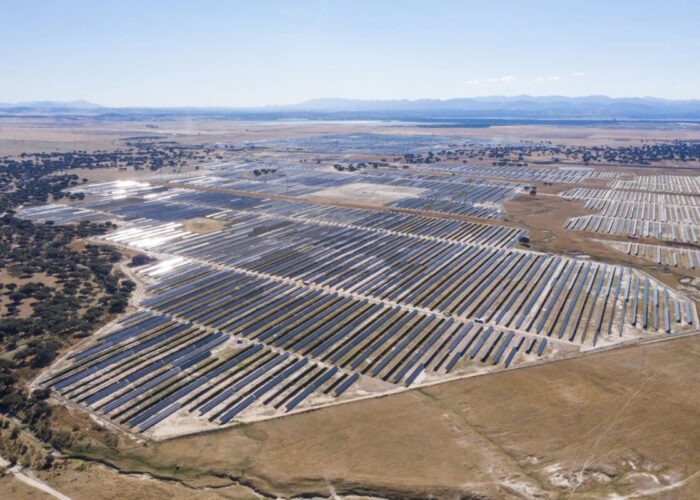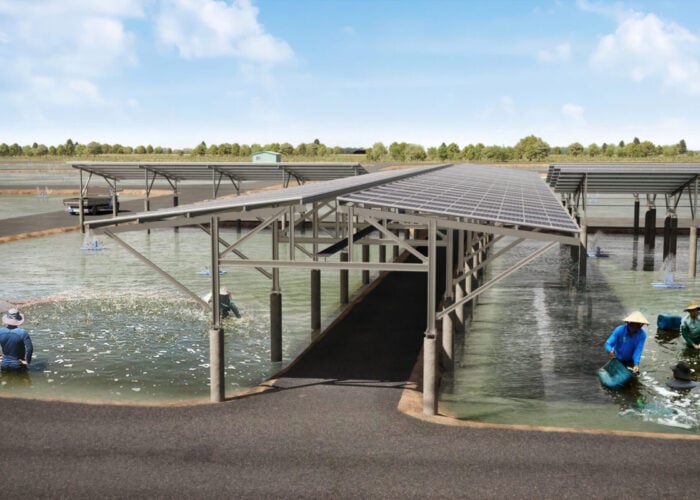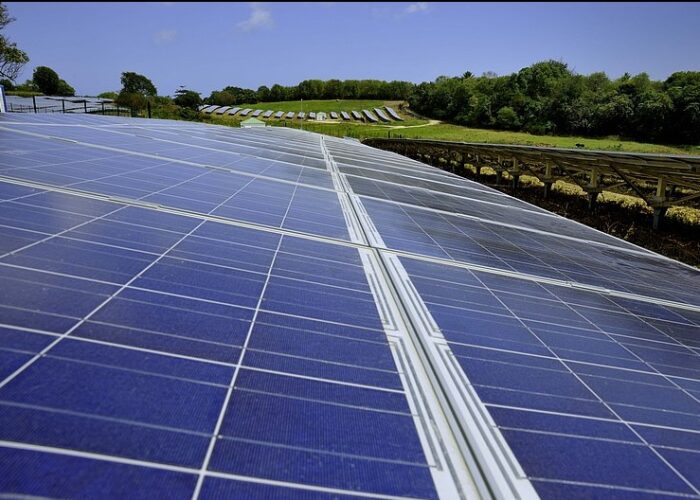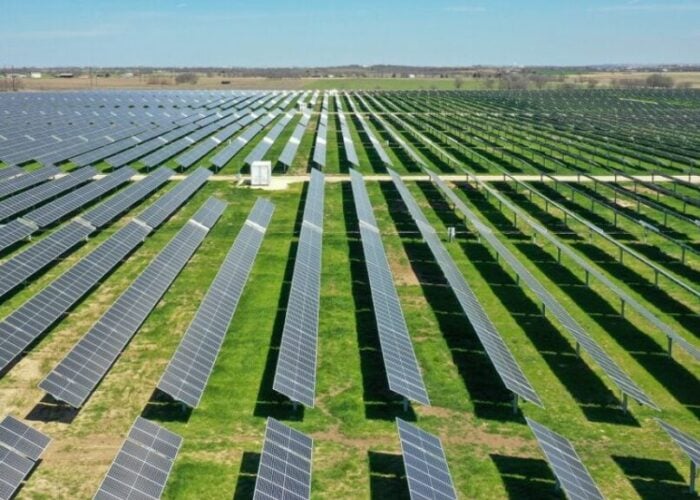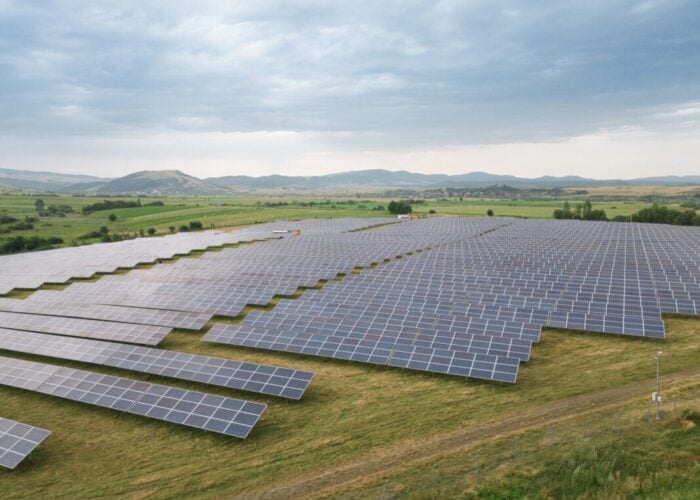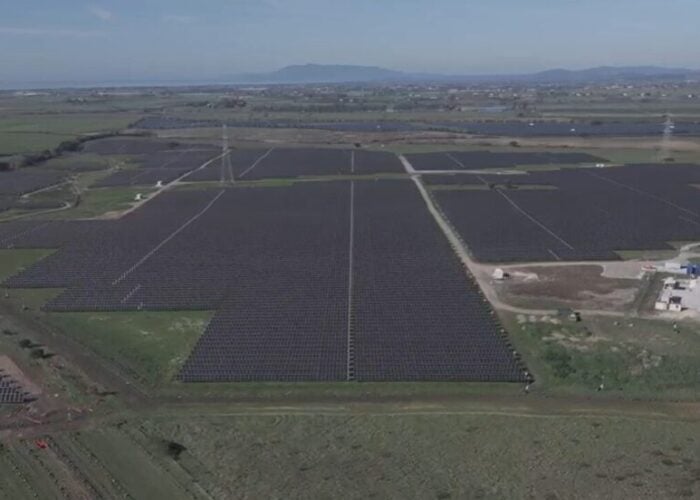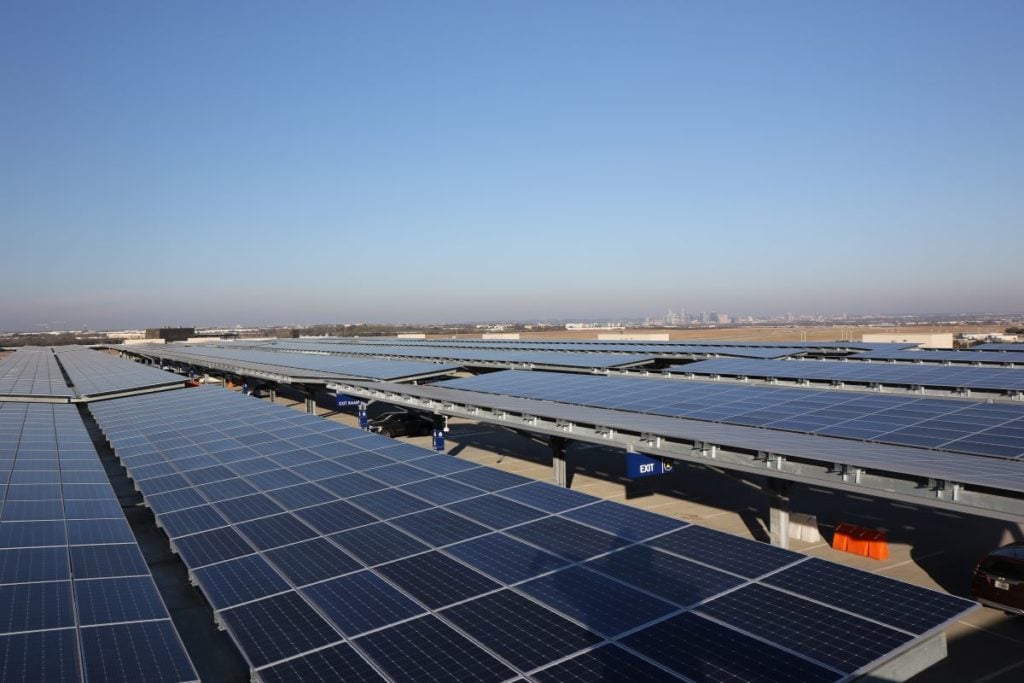
Tom Kenning looks at the rise of solar power in Texas, a US state better known for its role in the oil and gas industry, where a beneficial tax regime and an abundance of project land work in favour of building out solar power generation.
While California has traditionally dominated solar headlines in the US, Texas is now set to become the leading market in the country, demonstrated by a spate of financing deals and PPA signings in recent months. Texas’ interest in PV has also skyrocketed since the Winter Storm Uri left millions of Texans without power as snow and ice paired with ultra-low temperatures caused widespread disruption in February 2021.
Unlock unlimited access for 12 whole months of distinctive global analysis
Photovoltaics International is now included.
- Regular insight and analysis of the industry’s biggest developments
- In-depth interviews with the industry’s leading figures
- Unlimited digital access to the PV Tech Power journal catalogue
- Unlimited digital access to the Photovoltaics International journal catalogue
- Access to more than 1,000 technical papers
- Discounts on Solar Media’s portfolio of events, in-person and virtual
Unlike natural gas infrastructure above ground, solar can still work in freezing conditions. Recent months saw agri-voltaic specialist Pristine Sun bag funding for Texas projects, as did PV developers like Leeward Energy; and further upstream, manufacturers like SEG Solar and solar recycling specialists Solarcycle also obtained financial backing. Few industry commentators had any substantial concern about the infamous fall of Silicon Valley Bank, which was a major investor in community solar.
Most of the latest projects announced for Texas require large amounts of land, but compared to other states in the US, Texas has plenty available, and big spaces that are close to transmission lines, says Sylvia Leyva Martinez, senior research analyst at Wood Mackenzie. Texas also has a huge production of oil and gas that can be accessed by factories requiring high energy loads. Taxes are also very low in Texas with no state tax, making it less expensive than many other states that mandate local tax, state tax and federal tax.
“For renewable projects, the processes for interconnection, transmission and distribution are easier compared to other states,” adds Martinez. “You only need local approval to get a large project ongoing compared to state approval, or having more entities involved, so it takes less time to develop a big project.”
The Southern state also offers transparency to clean energy developers. The different transmission and distribution providers in Texas make public all the requirements for interconnection, which streamlines the process. Permitting is also said to be far easier in Texas than in most other US states.
Texas the lone ranger
Texas plays by its own rules in a number of areas including permitting, isolated grids and a lack of labour unions. The Electric Reliability Council of Texas (ERCOT), which runs the Texan grid, for example, is not under federal regulation and has its own regulatory practices.
“One thing that is very different in ERCOT versus other ISOs or RTOs is winterisation of assets,” says Martinez. “ERCOT does not require assets to be winterised, so there are lower costs compared to developing in other regions. It’s easier and to some extent less expensive to develop projects in ERCOT just because they have their own regulatory frame that is less strict compared to a federal level.”
This sentiment is backed up by Jim Wood, CEO of SEG Solar, a Houston-headquartered PV module manufacturer which produces both TOPCon and N-type PV modules at its Texas factory.
“Look at states like California,” he says. “It’s very onerous to build out there whether you’re building a solar power plant, or you’re building a manufacturing [plant]. First and foremost, there’s significantly more permitting regulations, versus Texas which isn’t as onerous.”
There’s very little unionised labour and there’s a very good supply of non-union labour, which brings down all the costs, whether to build a plant, or even a factory, Wood adds.
CREZ dividends
The current solar momentum in Texas can also be traced back to its Competitive Renewable Energy Zone (CREZ) initiative, begun in 2005 and completed in 2014, which aimed to drive massive new wind energy capacity addition, says Troy Helming, founder of Pristine Sun, a community and utility-scale PV developer specialising in agrivoltaics. As solar matches wind in terms of generating power at different times of the day, this push for wind in Texas meant that PV could come in to fill the gaps.
While there is capacity on the transmission lines for solar, which makes it attractive, getting into the interconnection queue is not so easy.
“It used to be a year or two,” says Helming. “Now, it’s probably three to five years to get through interconnection.”
Texas was always a global energy hub
Texas is by far the largest producer of crude oil in the US and has a history immersed in oil and gas production.
“At a very high level, Texas has always been a global energy hub, so it’s no surprise that as solar becomes the king of energy, Texas will become the king of solar,” says Jesse Simons, chief commercial officer of Solarcycle, a pioneering PV recycling specialist which has a facility in Texas. “Connected to that Texas is the fastest growing solar state in the country. It will soon have more solar than any other state.”
The state is so large that land is relatively cheap and it benefits from high irradiation and an extremely flat geography making it very easy to install the largest-scale multi-gigawatt solar projects.
Given its history of energy infrastructure, the Texan workforce is also well trained and versed in the energy landscape.
“Even though they’ve mostly been working in oil and gas, there’s a reason why BP Solar, Shell and these other companies are stepping in and leading on a lot of big wind and solar and storage projects,” adds Simons. “They understand energy and this is essentially just another form of energy.”
Market changes not regulation changes
PV Tech asked industry commentators whether any regulatory changes had spurred the sudden financing surge, but no policy changes were highlighted. Instead, the change has come through the backdoor with a shift to power purchase agreements (PPAs).
Historically, getting long-term PPAs is difficult in Texas, says Helming. Thus, many wind projects were built under merchant contracts, which brought more risk due to uncertainty over future power sale prices. However, corporate buyers for renewable energy, including big tech companies for data centres, Fortune 2000 companies, and manufacturing facility developers, have started entering the market in recent years.
“Your customer for a solar farm isn’t just utilities anymore,” adds Helming. “It can be corporate buyers and they’re often willing to sign 10- or 15-year contracts, which is long enough to raise the financing to build a project, and those customers are investment grade and highly credit-worthy. So, it’s a market condition rather than a regulatory condition that has improved the attractiveness of getting your customer offtake.”
Financing players and SVB calm
According to Wood Mackenzie’s database, amongst operational and development projects, some of the largest financiers and investors for Texas solar appear to be CIT Group, Bank of America, Morgan Stanley, U.S. Bank, Wells Fargo, and North America Development Bank. However, Martinez adds the caveat that there could be other large players in the market since the analyst firm’s financing data captures about 10% of all such capacity in Texas.
Martinez has not heard of any major concerns around the demise of the major community solar investor, Silicon Valley Bank (SVB), in terms of its effects on other banks. Instead, she notes that most industry players are more concerned with the forthcoming definition of the US’ domestic content regulation, which will incentivise the use of certain pieces of domestically sourced equipment. Several manufacturers have said their plans will adapt in direct response to whatever the final guidance is.
For PV power plants, most of the large utility-scale global players, all of the major banks and the standard tax equity, finance players are in Texas, says Wood.
“They’re all there financing, especially on the tax equity side for projects, and there’s some large funds out there that companies are using and those funds are looking for more of a fixed return or an alternative to bonds or other types of fixed income.
“It’s similar to most of the US. All the projects need tax equity financing, and because tax credits play a large part of that, it’s all the major companies and financial institutions that make profits and have lots of taxes. That’s who’s financing.”
Ultimately, commentators said that there is far more capital chasing investments in Texas than there are projects.
“It’s basically to the developers’ advantage because it’s driving down the cost of capital as there’s more competition for debt, tax equity and sponsor equity,” says Helming. “It’s been the case for probably about the last four to five years and it’s accelerated pretty substantially here in the last two years.”
Storm Uri
Storm Uri was a game changing moment for Texans’ relationship to power since blackouts hit most of the state for a few days in February 2021, impacting not just electricity but also water supplies. Some of the wind turbines did not have cold weather packages to help with de-icing the blades during the storm and were affected by the freezing conditions, but Helming says most of the turbines have now been upgraded in response. While solar production during the day matches up well with the large air conditioning demand for nine months of the year during hot days in Texas, one of the biggest attractors for solar PV is its ability to perform in freezing conditions.
“There’s still a lot of above ground natural gas infrastructure where the pipeline pops up out of the ground to go through a pumping station,” says Helming. “And most of those are gas powered pumps, rather than electric pumps. So if the gas is frozen, the pump shuts off. But solar doesn’t have that problem. It doesn’t matter if it’s really hot or really cold, it keeps producing.”
Developing PV projects
One of the biggest problems in Texas is that generation and load can sometimes be far away from each other, and it can be complicated to develop PV projects close to load centres due to land availability. Wood Mackenzie’s analysis shows that the top counties for projects in development (by MW capacity) at present are Wharton, Lamar, Falls, Swisher, Milam, and Fort Bend. This is a noted shift from the top counties in terms of operational capacity, which are mostly located in the ERCOT West zone – Pecos, Andrews, Upton, Brazoria, and Denton counties.
“Developers may be looking to avoid higher curtailment risk in a region where much solar has already been developed,” adds Martinez.
The PV sector in Texas is dominated by large utility-scale projects using economies of scale to overcome financing hurdles, so there are far fewer 5-30MW medium-size projects.
“In Texas, projects tend to be 250MW and up for the most part and so you really need scale to make it work,” says Wood. “It’s economics work because the land is really cheap and labour is cheap.”
“On the residential side, Texas works great. It’s an unregulated market so there’s quite a bit of residential solar.”
Wood again referred to the outages during Storm Uri and how the crises created a lot of demand for household PV.
“The Southern state offers transparency
to clean energy developers.
The different transmission
and distribution providers in Texas
make public all the requirements
for interconnection, which streamlines
the process”
Wood, whose manufacturing firm SEG Solar is located in Houston, says: “There’s a famous hockey player named Wayne Gretzky who once said ‘you go where the puck is going not where it’s been’. When you look at subsequent years, the Texas market is going to become the largest market in the US in both residential and utility-scale. So, when you look at that market, for us, it makes a whole lot of sense to locate in Texas, because it cuts down on transportation costs, there’s a port there, and labour is very competitive.
“There’s a lot of talent. There’s a lot of folks that work in the energy industry. And as we see a transition from traditional natural gas, oil and other types of power, I think we’re going to continue to see a lot of those folks look for jobs in renewables.”
Agrivoltaic opportunities
Helming’s firm Pristine Sun develops agrivoltaics projects, an idea born a number of years ago out of regulatory challenges at a time when the American Farm Bureau Federation was trying to stop PV projects in the US.
Transmission is a key driver in decisions over where to locate PV projects. It is easy to find land in Texas, but hard to find it near a transmission line that has capacity. Secondly, agrivoltaics can be chosen as a way to keep landowners happy with royalty payments or lease payments from the developer as well as continuing to draw an income from a rancher wanting to graze livestock on the property or, if the soil is appropriate, a contract farmer growing crops.
“In some rare cases, we’re buying the land, because we’ve noticed in Texas, there are a lot of landowners who are ageing, and the kids are not in the family business,” says Helming. “They’re not interested in being a rancher or a farmer and so they want to sell the land rather than sign a 25-35-year lease. So that’s new for us. We’re starting to figure out how to partner with investors who want to help us buy the land.”
Pristine Sun always uses trackers spaced out far enough from each other to allow agricultural practices to continue. Most plants have livestock around them, but it can involve simply planting native wildflowers to support bee colonies as a minimum. Farmers can also grow alfalfa for livestock or vegetables amongst these projects, taking advantage of 3-4 hours of extra shade each day from the solar panels.
Future transmission unlocked
Most of Texas is part of an island grid run by ERCOT with little movement of energy back and forth, which contributes to transmission bottlenecks, which is the key challenge for solar development. However, Pristine Sun is collaborating with a sister company, Earth Grid, to develop underground transmission lines to be able to import and export large quantities of energy into and out of ERCOT.
“That will help solve some of the grid challenges in Texas and it will also enable vast new resources of both solar and wind to get to the load centres of the big cities in Texas,” adds Helming – noting that transmission is the biggest impediment to the growth of clean energy not just in Texas but in most places across the globe.
“I am very bullish on the Texas market for solar, mainly because the economics of solar compete very well,” says Helming. “It’s way cheaper than coal and nuclear and slightly cheaper or way cheaper than gas depending on where you are in the state. So the economics will drive significant growth in solar for at least the next five to 10 years.”

